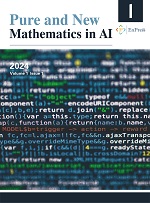|
Journal abbreviation: P. N. Math. AI
|
Pure and New Mathematics in AI is an international open-access peer-reviewed journal. The journal publishes original, high-quality research articles, review articles, editorials, commentaries, methods, and more. It is available for professionals in related fields worldwide to read and use, and we are committed to ensuring that articles published in it receive maximum visibility.
|
Online Submissions
Registration and login are required to submit items online and to check the status of current submissions.
Already have a Username/Password for Trends in Horticulture?
GO TO LOGIN
Need a Username/Password?
GO TO REGISTRATION
Submission Preparation Checklist
As part of the submission process, authors are required to check off their submission's compliance with all of the following items, and submissions may be returned to authors that do not adhere to these guidelines.
- The submission has not been previously published, nor is it under the consideration of another journal (or an explanation has been provided in Comments to the Editor).
- The submission file is in Microsoft Word format.
- Where available, URLs for the references have been provided.
- The text adheres to the stylistic and bibliographic requirements outlined in the Author Guidelines, which is found in About the Journal.
- If submitting to a peer-reviewed section of the journal, the instructions in Ensuring a Blind Review have been followed.
Privacy Statement
The names and email addresses entered in this journal site will be used exclusively for the stated purposes of this journal and will not be made available for any other purpose or to any other party.
Article Processing Charges (APCs)
Pure and New Mathematics in AI is an Open Access Journal under EnPress Publisher. All articles published in Pure and New Mathematics in AI are accessible electronically from the journal website without commencing any kind of payment. In order to ensure contents are freely available and maintain publishing quality, Article Process Charges (APCs) are applicable to all authors who wish to submit their articles to the journal to cover the cost incurred in processing the manuscripts. Such cost will cover the peer-review, copyediting, typesetting, publishing, content depositing and archiving processes. Those charges are applicable only to authors who have their manuscript successfully accepted after peer-review.
| Journal Title | APCs |
|---|---|
| Pure and New Mathematics in AI | $800 |
We encourage authors to publish their papers with us and don’t wish the cost of article processing charges to be a barrier especially to authors from the low and lower middle income countries/regions. A range of discounts or waivers are offered to authors who are unable to pay the article processing charges. Authors can write in to apply for a waiver and requests will be considered on a case-by-case basis.
APC Payment
Payments for APC of this journal can be made through our online PayPal payment gateway. Enter the Article No. into the below textbox and select "Pay Now" to proceed with payment.
*Article No. is mandatory for payment and it can be found on the acceptance letter issued by the Editorial Office. Payment without indicating Article No. will result in processing problem and delay in article processing. Please note that payments will be processed in USD. You can make payment through Masters, Visa or UnionPay card.
Vol 2, No 1 (2025)
Table of Contents
In this paper, a novel group decision-making method is proposed based on the weighted SBM model of data envelopment analysis (DEA) and intuitionistic fuzzy preference relations (IFPRs). Indeed, for the data fuzzy numbers set, the main aim of this study is to measure the efficiency of different alternatives in the framework of IFPRs by the weighted SBM model. In this regard, first, the interval transform function is used to convert IFPRs into interval multiplicative preference relations. After calculating the efficiency, the optimal weights for each IFPR are identified using two cross-efficiency models to obtain the normalized intuitionistic fuzzy priority vector. Then, an algorithm for group decision-making is proposed using a goal programming, SBM model with ideal weights and IFPRs to rank the units. Finally, the model is implemented numerically, and the results are also compared with other models, including the output-oriented Charnes-Cooper-Rhodes) CCR (and basic Banker-Charnes-Cooper (BCC) models. It is shown that the proposed method outperforms traditional CCR and BCC models and provides more reasonable results.
The present paper is an attempt to describe the writing pattern of Hindi language texts with the help of mathematical techniques. The analyses of the selected texts have been done by the use of the roman alphabet transforms of the texts. An attempt has been made to characterize texts mathematically on the basis of the presence of different letters of alphabets and by means of quantification of the texts with the help of entropy of pattern of occurrence of letters. The characteristic curves have been formed depending on the presence of different letters in the corresponding roman text and the entropy of the pattern of occurrence of letters has also been calculated. The determined curve and the entropic extent have also been compared with the same type of curve and entropies for two texts in the English language. The work has significance in the process of language identification, as the determined curve and the specific entropic quantitative measure can be considered useful tools.




 Open Access
Open Access
